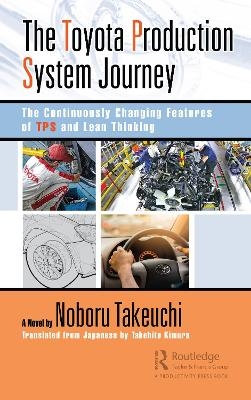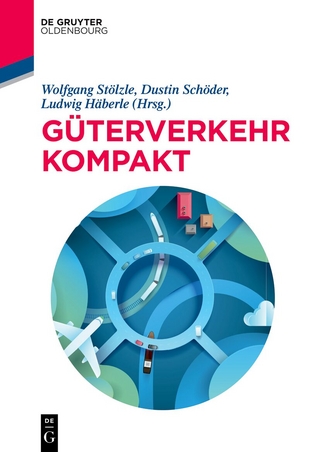
The Toyota Production System Journey
Productivity Press (Verlag)
978-1-032-34677-9 (ISBN)
There is a TPS concept that seems to elude many, and that is that manufacturers should be able to make a product available at the moment a customer comes and asks for it. There are various ways and various tools that can be used to pursue the ideal state, and therefore we need to focus on the basic principles of TPS. This book tries to explain those Toyota Production System concepts that may otherwise be elusive.
This book focuses on the factory to help readers understand the fundamental ideology of TPS. The main character started his career as a technical expert in the R&D division of an automotive Company and eventually becomes an Instructor of TPS. His broad career in companies is used to vividly describe the form of the Toyota Production System. To explain the growth of apprentices of various titles and positions, this story is woven with several short stories presented from the perspective of the main character, who grows from being a group leader to section leader to manager to general manager.
Essentially, this book describes the Toyota Production System as based on the philosophy: “Always sketching out and pursuing the ideal state of manufacturing.”
Noboru Takeuchi is an executive consultant in a Japanese consulting firm for manufacturing called Process Design Co., Ltd. Japan, where he shares his knowledge and experiences of the Toyota Production System, known as TPS. He was Ex-Adjunct Professor at Aichi Gakuin University Graduate School, the former Chief Adviser of the Production Engineering Management Meeting held by the Japan Management Association (JMA). He worked at an automotive company of the Toyota Group for Genba innovation based on the Toyota Production System, researching and developing the production process technology for the automotive elemental components, and leading the business administration flow process based on the concept of TPS. He has worked on cost reduction, the 5S, Kaizen of operations and logistics, the Kanban system, productivity enhancement, lead time shortening, and quality in the production workplace. He has a Bachelor of Engineering from the Nagoya Institute of Technology and a Master of Chemical Engineering from Osaka Prefecture University in Japan.
Part 1: The Team Leader grows as a production supervisor 01. Team Leader Julie looks back at her notes Part 2: Overview of the purpose of the Toyota Production System 02. Trigger 03. Purpose 04. Consideration Journey Two: Meditation Journey Part 3: Encountering the Toyota Production System 05. Prologue 06. Encountering the Toyota Production System 07. Getting through the R&D 08. Setting up a production line 09. Transfer to the production workplace. How should the factory be managed? 10. Encountering Kanban at the start of mass production Part 4: Production by way of Kanban 11. Machine-based: The machine-based workplace managed via Kanban 12. Manual-based: Working on the assembly line 13. An"Anti-TPS" force? 14. Kanban as part of the daily management routine Part 5: Standing still and observing the jobsite by means of Genchi-Gembutsu 15. Observing the Production Workplace closely using Standing Observation; How worthless management that exists only on paper is! 16. Is it easy to manage in the Kanban world!? ; What is the role of the manager? 17. The role of the Assistant Manager in the Toyota Production System Part 6: Learning the Toyota Production System as a technical expert in mid-position 18. Learning the Toyota Production System together with young technical experts 19. Learning the role of the Toyota Production System 20. The never-ending pursuit Journey Three. Implementation Journey Part 7: Entering the Kaizen Promotion Organization 21. New departure 22. Transfer to the managing division of TPS activities 23. The way to advance the activity: Organization for promoting TPS 24. What is the company-wide function of OMCD? 25. TPS activity is mainly implemented in the Production Division under the support of the TPS Promotion Department Part 8: Implementation in Jishuken 26. The Institute for the Study of the Toyota Production System: Jishuken 27. Organization, themes and attendees of Jishuken 28. The activity teams in Jishuken divided into Production and Logistics29. Learning the ideology and the techniques, implementing Kaizen in Jishuken inside the company Part 9: Becoming a Kaizen practitioner 30. Productivity: Apparent Efficiency and True Efficiency, Rate of Operation and Operational Availability 31. Improvement of work in the production line 1: The Muda of work, the ideology of Flexible Manpower Line 32. Improvement of work in the production line 2: Standardized Work 33. Improvement of machine in the production line 34. Improvement of process in the production line 35. As a Kaizen practitioner Part 10: President of supplier remembers the Kaizen activities 36. President of supplier looks back 37. President had a bad time with poor instruction 38. Reviewing the Kaizen activity 39. Restarting the TPS activity 40. Establishing the continuous TPS Kaizen activity Journey Four. Deepening Journey Part 11: Learning the true procedure for Kaizen 41. When absentminded 42. Visualizing the workplace by initially doing 2S, especially in the TPS level grade A company 43. Proceeding initally to sketch out the ideal state Part 12: Advancing toward the high-level features of TPS 44. Learning the high-level features of TPS, implementing Kaizen Production in Jishuken inside the company 45. Learning the high-level features of TPS, implementing Kaizen of Logistics in Jishuken outside the company 46. Implementing the activities in a different culture where a practitioner develops the ability to find out the problem47. Changing features of the Toyota Production System Part 13: The Features of TPS 48. The Features of TPS (Global TPS: Schematic Diagram of the Toyota Production System) 49. Overview of the Toyota Production System (TPS): "Three Keys," "Four Behaviors" and "The Features of Monodzukuri (Manufacturing)" Glossary References
| Erscheinungsdatum | 28.09.2022 |
|---|---|
| Zusatzinfo | 20 Line drawings, black and white; 20 Illustrations, black and white |
| Verlagsort | London |
| Sprache | englisch |
| Maße | 152 x 229 mm |
| Gewicht | 544 g |
| Themenwelt | Technik |
| Wirtschaft ► Betriebswirtschaft / Management ► Logistik / Produktion | |
| Wirtschaft ► Volkswirtschaftslehre | |
| ISBN-10 | 1-032-34677-9 / 1032346779 |
| ISBN-13 | 978-1-032-34677-9 / 9781032346779 |
| Zustand | Neuware |
| Haben Sie eine Frage zum Produkt? |
aus dem Bereich


